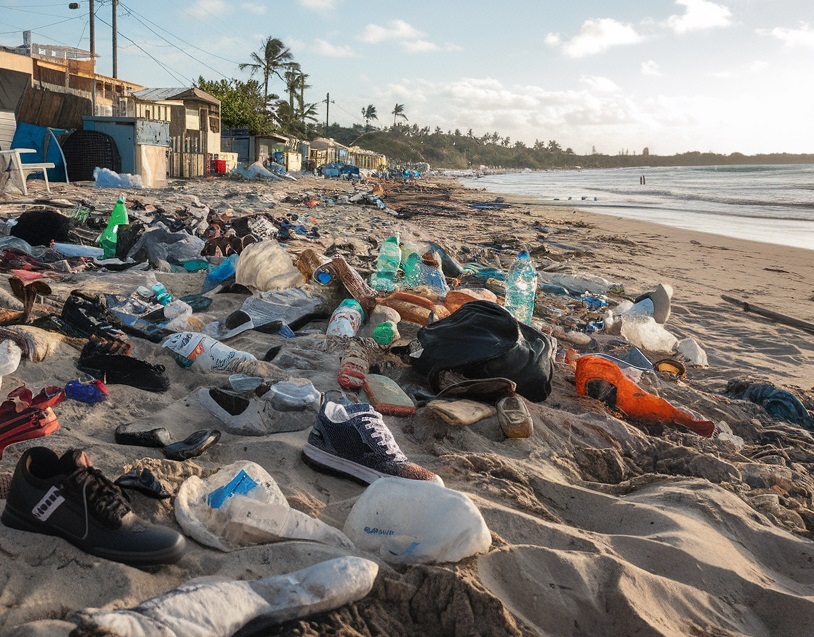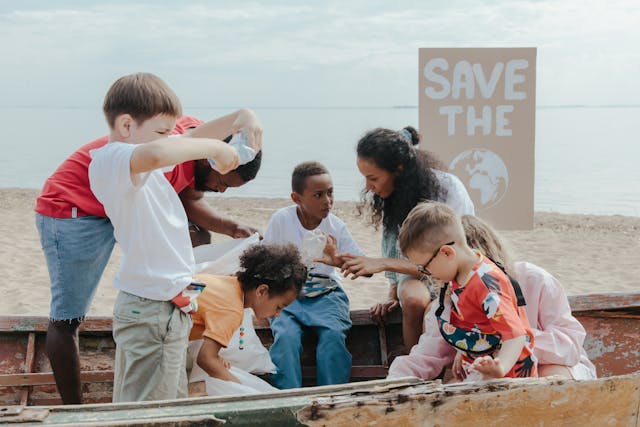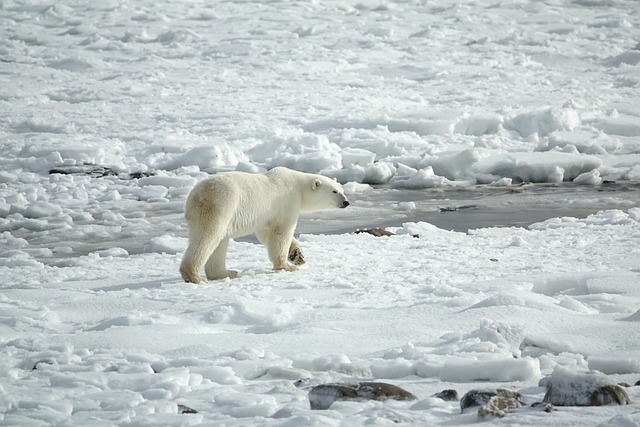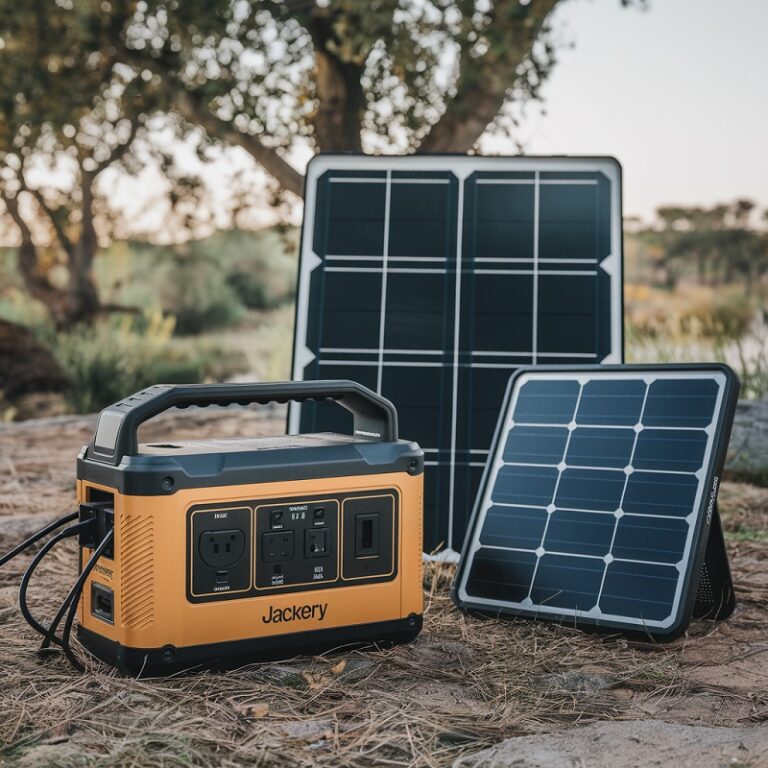Puerto Rico is grappling with a pressing trash problem that’s not just a visual blight, but a serious threat to its stunning landscapes, marine life, and the environment. The urgency of this crisis is underscored by its far-reaching impacts on health, tourism, and the economy. Let’s delve into the reasons behind this crisis, its profound effects on Puerto Rico, and the ongoing efforts to restore the island to its former glory.
Trash Problem Overview
The Puerto Rico trash problem has been growing for decades. With a population of around 3.2 million, the island generates about 3.7 million tons of waste yearly. Despite being small, the island’s landfills are full and there’s no proper recycling infrastructure. This trash crisis affects everything from health to the economy so solutions are crucial for Puerto Rico’s future.
Why So Much Trash in Puerto Rico?
Here are the main reasons:
- Limited Landfill Space: Puerto Rico’s landfills have been full for years and many are already at capacity.
- No Recycling Programs: Recycling is scarce and only 10% of waste is recycled on the island.
- High Consumption: Like everywhere else, Puerto Rico has a high consumption of goods, plastic, and single-use items.
- Tourism: Tourism brings millions of visitors to the island every year and more trash.
- Weak Waste Management Infrastructure: Hurricanes and other natural disasters have weakened the waste infrastructure making cleanup efforts harder.
These two factors create a cycle of waste accumulation and put a lot of pressure on the environment and the people of Puerto Rico.
How Waste Affects Puerto Rico’s Environment
Trash on the streets and beaches is just the surface. The waste problem affects the air, water and soil. Here’s a quick rundown:
| Environmental Impact | Description |
| Water Pollution | Waste contaminates local water sources, affecting drinking water and harming ecosystems. |
| Soil Contamination | Hazardous waste seeps into the ground, polluting soil and affecting agriculture. |
| Air Quality Issues | Open burning of waste releases harmful chemicals, reducing air quality. |
| Ecosystem Disruption | Wildlife habitats are damaged by trash in natural areas and the ocean. |
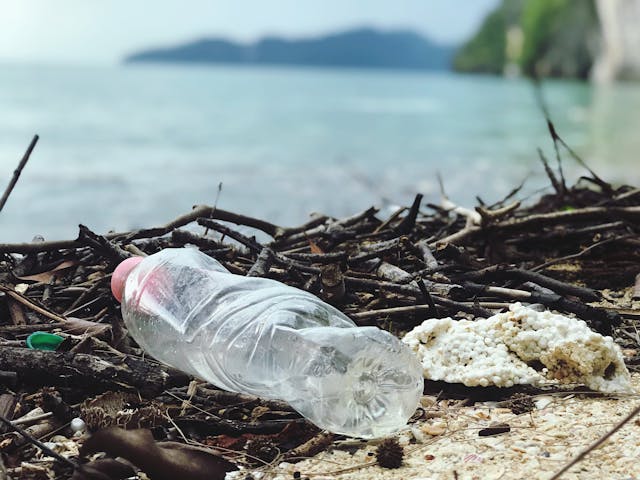
Effects on Marine Life and Ecosystems
Since Puerto Rico is surrounded by water, its trash problem heavily impacts marine ecosystems. Waste, especially plastic, ends up in the ocean, where it poses a serious threat to sea life:
- Plastic Pollution: Thousands of tons of plastic waste end up in the ocean each year, harming fish, turtles, and seabirds.
- Coral Reef Destruction: Trash covering coral reefs blocks sunlight and introduces toxins, harming these fragile ecosystems.
- Marine Animal Injuries: Animals mistake plastic for food or get entangled, leading to injuries or even death.
Health Risks from Waste
Puerto Rico Trash Problem aren’t just environmental; they can also impact human health. Here are a few of the main health risks associated with waste in Puerto Rico:
- Disease Spread: Improperly managed waste attracts pests like rats, which can carry diseases.
- Waterborne Illnesses: Trash in water sources contaminates drinking water, causing illnesses.
- Respiratory Issues: Burning waste releases harmful chemicals, affecting respiratory health.
Many communities in Puerto Rico face direct health risks due to the improper disposal and management of waste.
Economic Impact of Puerto Rico’s Trash Problem
The Puerto Rico trash problem also has a significant economic impact. Trash-filled beaches and polluted streets discourage tourism, one of Puerto Rico’s largest economic sectors. Additionally, it raises costs for cleanup and reduces the value of properties in trash-affected areas.
Real-time Data Example: Puerto Rico spends millions of dollars each year on waste management and cleanup efforts. An increase in tourism-driven waste after the COVID-19 pandemic has further raised these expenses, putting more pressure on local budgets.
Efforts to Manage Waste
What’s Being Done Managing the Puerto Rico trash problem is a collective endeavor that involves government programs, community initiatives, and individual action. Here’s a glimpse of the inspiring efforts, programs, and real examples of how Puerto Rico is taking proactive steps to address its waste crisis:
Waste Reduction Programs
The Puerto Rican government and local organizations have launched several waste reduction initiatives to address the Puerto Rico trash problem:
- 3Rs Program (Reduce, Reuse, Recycle): In San Juan, this program encourages residents to reduce waste, recycle, and reuse whenever possible. With workshops in schools and community centers the program is working to increase recycling rates from the current 10% to 20% by 2030.
- Zero Waste Puerto Rico: An initiative led by local environmental groups like Basura Cero Puerto Rico, this program promotes sustainable lifestyles and zero-waste practices. They offer free resources on composting, teach communities how to reduce single-use plastics and partner with businesses to reduce waste. Several restaurants in San Juan like Café Común and Bebé Café have joined the initiative by replacing plastic packaging with compostable ones. The initiative has seen significant success, with a 15% reduction in plastic waste in participating businesses and over 2,000 residents attending workshops annually.
Example of Impact: Since its launch Zero Waste Puerto Rico has reported a 15% reduction in plastic waste in participating businesses, over 2,000 residents have attended workshops annually.
Community Cleanups: A Growing Movement
Community cleanups are a key part of Puerto Rico’s fight against litter, especially on beaches and urban areas. Volunteers of all ages come together to clean their neighborhoods.
- Limpiemos Nuestra Isla (Let’s Clean Our Island): This community-based program initiated by local non-profit Scuba Dogs Society organizes monthly cleanups across the island. In 2023 over 5,000 volunteers removed approximately 45,000 pounds of trash from beaches, parks and rivers. Popular cleanup sites are Isla Verde Beach in Carolina and Escambrón Beach in San Juan where plastic bottles, fishing gear and other debris accumulates.
- Playas Limpias (Clean Beaches) Campaign: Focused on tourist areas, this program encourages local businesses to sponsor cleanups. With the support of eco-friendly organizations it has cleaned up areas like Condado Beach and Playa Flamenco in Culebra. This campaign also includes educational sessions to educate tourists on proper waste disposal resulting in cleaner beaches and more waste in recycling bins.
Example of Impact: According to Playas Limpias reports plastic waste at Condado Beach has decreased 18% since 2022, over 200 businesses are supporting the campaign through funding and participation.
Puerto Rican Government Policies
To improve waste management in the island, the government of Puerto Rico has been working on policies to support sustainable waste practices and increase recycling:
- Landfill Regulations: In 2022 the Environmental Quality Board (EQB) tightened up the rules for landfills. They require better waste segregation and penalize landfills that exceed capacity. The Toa Baja Landfill for example has received funding to implement better waste sorting and on-site recycling facilities.
- Act 247 – Recycling Promotion Law: To promote recycling, Act 247 requires all municipalities to have recycling programs and drop off points for recyclable materials like glass, paper and electronics. Bayamón and Ponce have set up collection centers and recycling rates have increased 12% since 2021.
- Single-Use Plastics Ban: To reduce plastic waste, Puerto Rico phased out single-use plastics in 2021. This includes plastic bags, straws and utensils, so businesses have to switch to biodegradable options. Businesses are incentivized to transition and there are tax breaks for those using compostable packaging.
Example of Impact: Thanks to the single-use plastics ban, restaurants and stores in Old San Juan have seen a 25% reduction in plastic waste, over 150,000 plastic bags replaced with biodegradable or reusable ones.
Results and Outcomes of Waste Management Efforts
It’s starting to add up:
- Recycling Increase: Since Act 247 was passed, island wide recycling has gone from 8% to 10%. Still low but a positive trend and more recycling facilities are being planned for Arecibo and Caguas.
- Beach Cleanliness: Thanks to programs like Limpiemos Nuestra Isla, beaches are cleaner. According to Scuba Dogs Society’s 2023 report, beaches that participate in the cleanups have 30% less trash than last year.
- Community Involvement: More Puerto Ricans are participating in cleanups, 20% more since 2022. This growing volunteer base shows a growing awareness of environmental issues and a shift towards sustainable practices among residents.
Individual Actions and Local Support
While government policies and organized programs are important, individual actions are key. Through educational programs and social media campaigns Puerto Rican residents are encouraged to:
- Compost at Home: Composting reduces household waste by turning organic matter into natural fertilizer. The Municipio Verde program offers free composting bins and instructions, over 1,500 households already participating.
- Use Less Plastic: Puerto Ricans are choosing reusable bags, bottles and containers. Stores like El Mercado Verde in Mayagüez offer discounts to customers who bring their own bags, reducing single-use plastic.
These combined efforts are gradually reshaping Puerto Rico’s approach to waste, leading the way toward a cleaner and more sustainable future. Although challenges remain, these initiatives show that effective waste management is possible with a collaborative approach among government, organizations, and individuals.
What Individuals Can Do to Help
While the government and organizations work on large-scale solutions, individuals can also make a difference:
- Reduce, Reuse, Recycle: Cut down on waste by recycling and reusing items whenever possible.
- Support Eco-friendly Businesses: Buy from companies that prioritize sustainability and reduce waste.
- Participate in Cleanups: Join local cleanup events to help keep communities and beaches clean.
- Educate Others: Spread awareness about the trash problem in Puerto Rico and encourage sustainable habits.
Every small effort adds up, and individuals play a vital role in managing the trash problem.
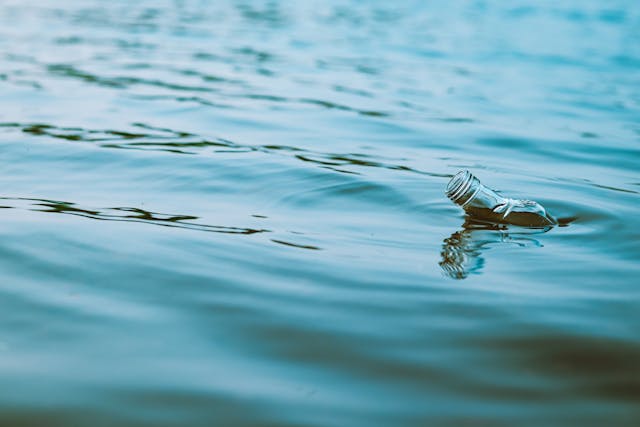
Challenges in Solving the Trash Problem
Several challenges make it difficult to resolve Puerto Rico’s waste issues:
- Limited Funding: Budget constraints make it hard for the government to invest in large-scale waste solutions.
- Natural Disasters: Hurricanes and storms disrupt waste management infrastructure, setting back progress.
- Lack of Awareness: Some residents are unaware of the severity of the trash problem or how they can help.
- Inefficient Waste Systems: Outdated waste systems make it hard to implement modern, sustainable practices.
Overcoming these challenges will require collaboration among communities, government, and international partners.
Future of Waste Management in Puerto Rico
Puerto Rico’s future waste management plans are looking to address the current challenges with new approaches and sustainable solutions. As the island is facing overflowing landfills and low recycling rates, the government, environmental groups and the community are pushing for a transformation to reduce waste and increase recycling.
Increasing Recycling Rates and Infrastructure
- Current Recycling Rate: Puerto Rico’s recycling rate is around 9-12% vs the US average of 32%. To achieve this, the government has set a target of 35% recycling rate by 2030. This will require a lot of investment in new recycling facilities and community engagement.
- Expansion of Facilities: Plans are to increase the number of materials recovery facilities (MRFs) across the island. In 2022 Puerto Rico allocated almost $40 million to expand recycling infrastructure, with two new MRFs to be built in the San Juan metropolitan area by 2025. These facilities will increase local capacity to sort and process recyclable materials that are currently being exported off-island.
Zero-Waste Initiatives
- Basura Cero Puerto Rico: Basura Cero, or “Zero Waste Puerto Rico,” is a growing movement to reduce waste generation. This initiative focuses on educating communities about composting, recycling and reducing single-use plastics. In 2023 Basura Cero reported that over 100,000 people participated in educational programs and several neighborhoods in San Juan reduced their waste by 25% in one year through community-led composting and recycling efforts.
- Plastic Reduction Goals: By 2035 Puerto Rico will eliminate single-use plastics. The implementation of a 2021 law that banned single-use plastic bags in large stores has already reduced plastic waste by 15% in the first two years. As more single-use bans are phased in, plastic waste will decline even more.
Waste-to-Energy (WTE) Initiatives
- Potential WTE Facilities: With limited landfill capacity Puerto Rico is exploring waste-to-energy (WTE) plants as a way to divert waste and generate electricity. A WTE facility in Arecibo has been proposed and could process 500,000 tons of waste per year and generate electricity for up to 150,000 households. If approved and built, this facility will reduce landfill waste by 15% and address both waste management and energy needs.
Biofuel Pilot Programs: Besides WTE plants, smaller pilot programs are converting organic waste into biofuel. One in Ponce will process 2,000 tons of organic waste per year and produce biofuel to power municipal vehicles, reducing emissions and waste.
Landfill Closures and Alternatives
- Current Landfill Capacity: Puerto Rico’s landfills are at a critical tipping point, with over half of the island’s 29 landfills either at or near capacity. The U.S. Environmental Protection Agency (EPA) has mandated the closure of at least 10 landfills that no longer meet safety regulations, putting further strain on the remaining sites.
- New Landfill and Alternatives: As an alternative, Puerto Rico’s Department of Natural and Environmental Resources (DRNA) is studying potential sites for a modernized landfill facility with advanced waste sorting and recycling capabilities. The government is investing approximately $20 million in landfill technology upgrades to prolong the life of existing sites and minimize their environmental impact.
Government Policies and Community Involvement
- Policy Enforcement and Incentives: The government is tightening enforcement on illegal dumping and waste violations, with fines up to $5,000 for individuals caught dumping. Additionally, incentives such as tax breaks and grants are being offered to businesses that adopt zero-waste practices or invest in recycling infrastructure.
- Community Engagement Programs: To raise awareness, government-sponsored programs like Puerto Rico Limpio organize monthly clean-up drives in major cities. In 2024, over 200 community groups participated in island-wide cleanup initiatives, collecting approximately 500 tons of waste from public spaces and beaches. Public participation in such programs is increasing by 10% annually, showing a growing commitment to cleaner surroundings.
Looking Ahead
With these strategies in place, Puerto Rico is on a path to significantly reduce waste, conserve resources, and protect the environment. If the island can achieve its targets, including the ambitious 35% recycling rate by 2030, it will serve as a model for other regions facing similar challenges. Transformative solutions, combined with policy enforcement and community action, indicate a promising future for waste management in Puerto Rico.
FAQs About Puerto Rico Trash Problem
- What causes Puerto Rico’s trash problem?
The trash problem is caused by limited landfill space, lack of recycling, weak waste management systems, and high consumption levels.
- How does waste affect Puerto Rico’s environment?
Waste affects water, air, and soil, leading to pollution that harms wildlife and disrupts ecosystems.
- Are there recycling programs in Puerto Rico?
Yes, there are some recycling efforts, but they’re limited and cover only about 10% of the island’s waste.
- What can residents do to reduce waste?
Residents can recycle, reduce single-use plastics, support eco-friendly products, and join cleanup efforts.
- How does tourism impact the trash problem?
Tourism increases waste from disposable items and plastics, putting extra pressure on the island’s waste systems.


